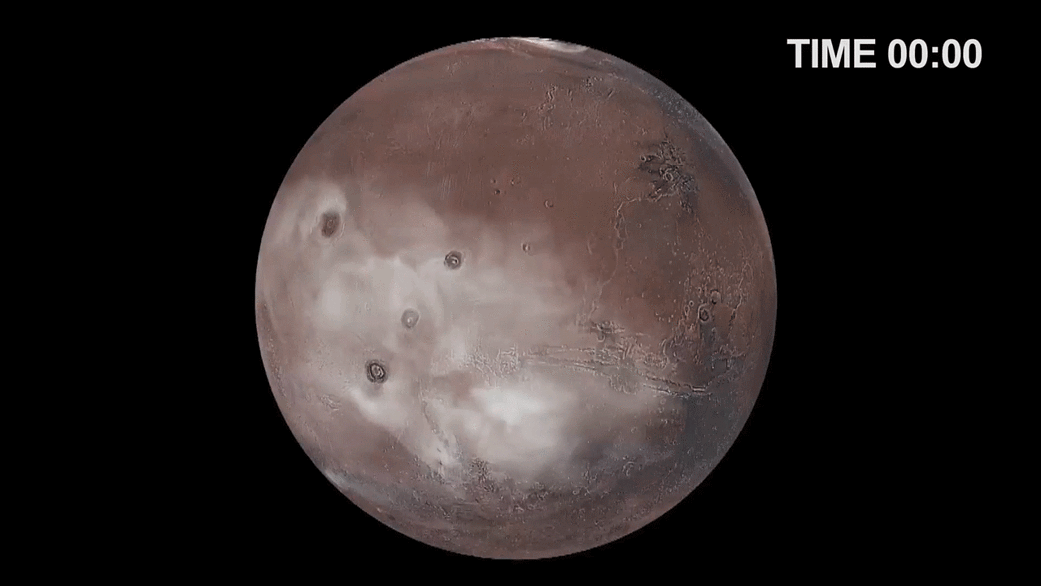As NASA’s Curiosity rover makes its way over the surface of Mars, it’s sometimes accompanied by clouds drifting by in the sky above. Like Earth, the Red Planet has a water cycle, with water molecules moving between the surface and the air, traveling through the atmosphere and coming together to form clouds. The behavior of water-ice clouds on Mars plays a big role in its climate, and this computer simulation shows them forming and dispersing over the course of a Martian day.
At the time of year shown here – summer in Mars’ northern hemisphere – clouds form slowly overnight near the equator and are at their thickest just before the sun rises. They disperse quickly as the day warms up and begin to reform around dusk. Several peaks of Tharsis Montes, a chain of volcanoes, can be seen jutting through the clouds.
Researchers at the Mars Climate Modeling Center, at NASA’s Ames Research Center in California’s Silicon Valley, rely on supercomputers to create data visualizations like this one. Their work shown here reveals that, although Martian clouds are thin compared to Earth’s, they have a significant effect on the intensity of its wind systems. And that means they help control the movement of water around the planet.
The NASA Advanced Supercomputing facility, also at Ames, provides Mars researchers with the necessary computing power to study how the planet’s atmosphere works – in fine detail, around the globe and across timescales ranging from days to the entire history of the planet. This work assists NASA in planning missions to Mars and helps us understand our solar system better by answering questions about how planets evolve and whether conditions on Mars could once have been favorable for life.
NASA is showcasing 38 of the agency’s computational achievements at SC19, the international supercomputing conference, Nov. 18-22, 2019, in Denver, Colorado. For more technical information, visit: https://www.nas.nasa.gov/sc19.
For news media:
Members of the news media interested in covering this topic should reach out to the NASA Ames newsroom.
Visualization: NASA/Ames Research Center/D. Ellsworth
Author: Abby Tabor, NASA’s Ames Research Center





























